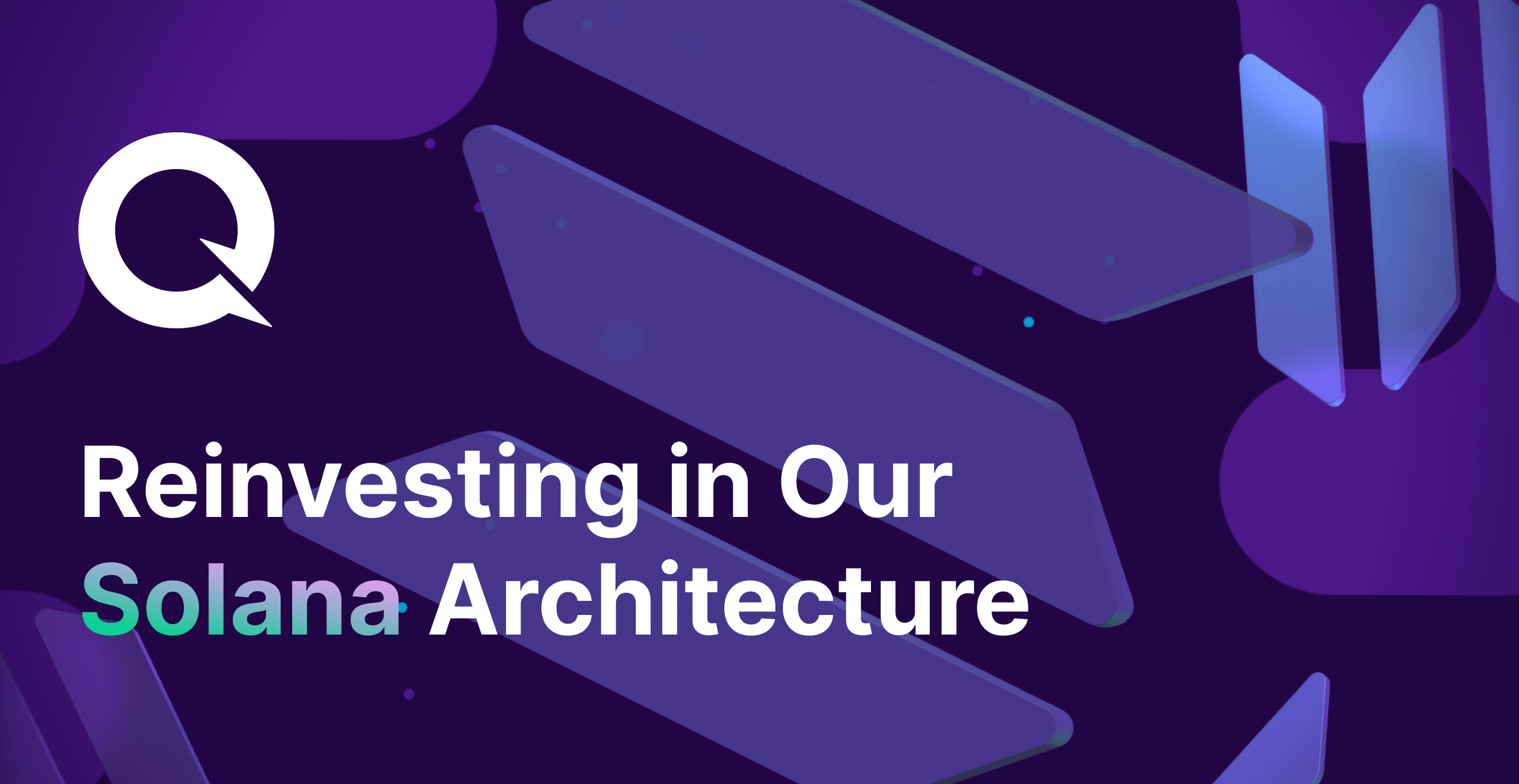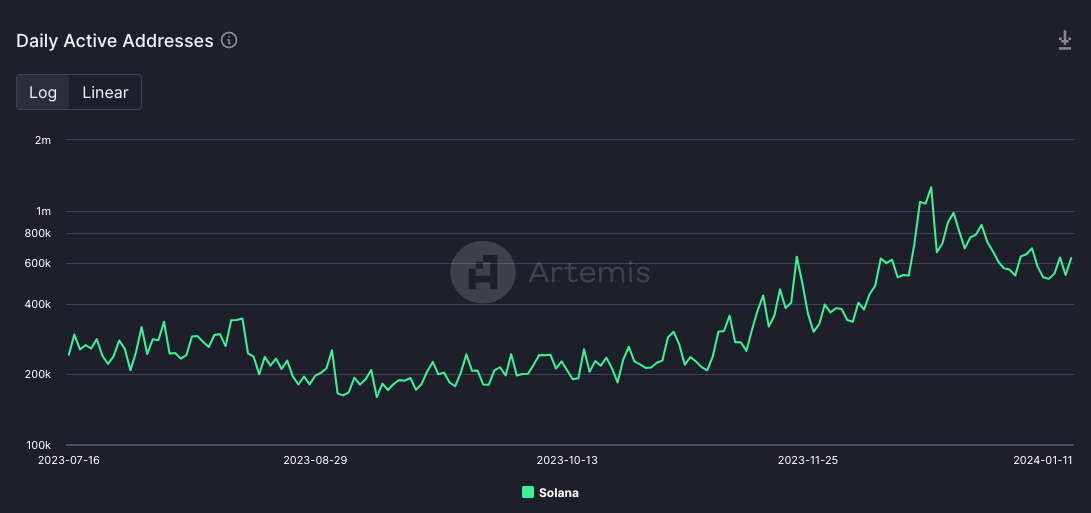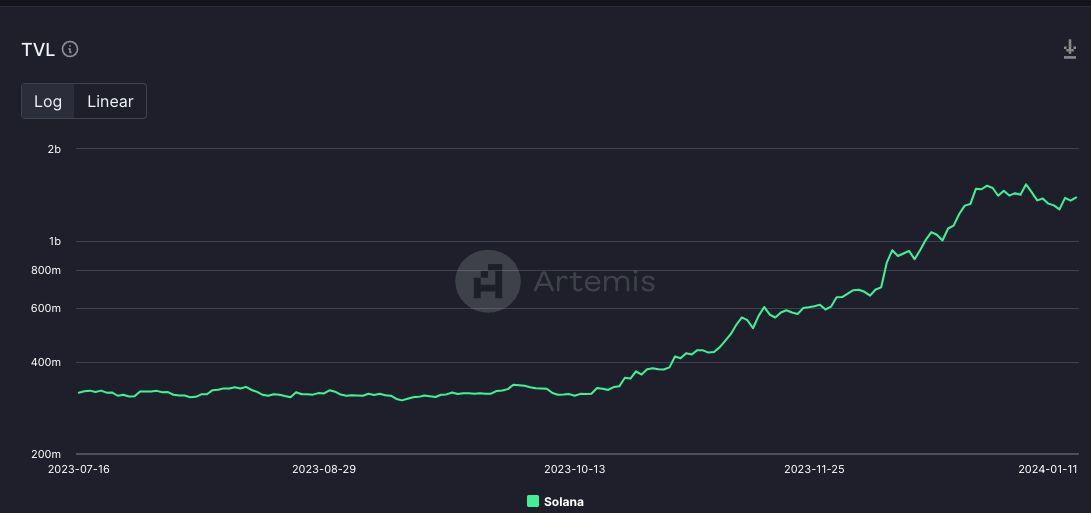Reinvesting in Our Solana Architecture
QuickNode's Response to Solana Network's Latest Innovations: The SPL-20 Surge and Compressed NFTs.

Edit 11.13.2024: In an effort to provide further value to all Solana users, QuickNode is reducing the cost of all Solana RPC calls by 25% till the end of the year.
Over the past year, Solana has made significant innovations to help developers build. With these changes, their network surged in popularity, experiencing a 4.3x increase in Active Wallets and a 3x increase in Transaction Volume. As the first infrastructure provider to integrate with Solana in 2021, we spent the past 2 months and over $500k reinvesting into our Solana architecture to reclaim our leading spot as the fastest RPC partner with the lowest latency (see our public dashboard here comparing QuickNode, Alchemy, ANKR and more).
In this blog post, we want to detail the two most notable Solana improvements, Compressed NFTs and SPL-20, while going in-depth on how we spent months improving our Solana architecture for SOL builders.
What are Compressed NFTs?
Compressed NFTs (cNFTs) are space-saving NFTs on Solana that store data efficiently using a Merkle tree. They keep a tiny verification code on-chain and the bulk of data off-chain, reducing storage costs. This opens up new possibilities for mass NFT creation and use but might require adjustments to existing smart contracts. Compressing NFTs saves developers and creators money. Now, minting a collection on Solana costs less than $1 compared to previous collections upwards of $100k. Magic Eden marketplace announced they were going to support Solana’s new compressed NFTs September of 2023, which was the first large announcement outside of Metaplex in 2022.
How do Compressed NFTs Work?
Here's a quick look at how compressed NFTs are created.
1. Verification: Metaplex's Bubblegum program verifies NFT metadata
2. Off-Chain Storage: NFT data is stored off-chain, like a virtual filing cabinet
3. Merkle Tree Update: A new leaf (representing the NFT) is added to the Merkle tree, a special structure that links all the NFTs together
4. On-Chain Record: The Merkle tree's root (like a digital fingerprint) is updated on the Solana blockchain, confirming the change
5. Indexer Management: Off-chain indexers monitor the Merkle tree for modifications and manage data access for dapps and programs
QuickNodes Compressed NFT Solution
In response to this new cNFT standard, we've added the Metaplex Solana Digital Asset Standard (DAS) API to our QuickNode Marketplace, now available for all users. This powerful tool simplifies your interaction with digital assets (especially for NFTs) on the Solana blockchain, making your development process smoother, more efficient and affordable.
Highlights of Solana DAS API:
- Access a variety of compressed digital assets data, including tokens and NFTs, through a single, unified API
- Manage diverse asset types easily: Non-Fungible Assets, Fungible Assets, and more
- Utilize comprehensive methods like
getAsset,getAssets, andsearchAssetsfor your asset management needs
Why Choose QuickNode’s Solana DAS API?
- Streamlines blockchain development on Solana
- User-friendly with practical use case examples
- Seamless integration with your QuickNode endpoint
Get started with the Metaplex Solana DAS API!
What is Solana SPL-20?
In October '23, Solana introduced SPL-20, a feature akin to Bitcoin's BRC-20, revolutionizing data storage by embedding images directly on the blockchain. This novel approach has rapidly gained popularity, offering secure, permanent, and fully integrated storage solutions within the Solana network. However, this innovation has brought its own challenges, including increased block sizes and additional costs due to the growing number of signers and mints.
SPL-20 inscriptions:
- Goals: Store digital art directly on the Solana blockchain for increased security, permanence, and independence from external platforms
- Benefits:
- Dynamic rendering, on-chain media support
- Accessible platform for NFT enthusiasts
- Challenges:
- Potential network bloat from large file storage
- Necessity questioned due to Solana's existing NFT capabilities
In short, SPL-20s offer innovative on-chain storage for digital art, but concerns about scalability and practical needs exist.
A Surge in Popularity and Demand
The introduction of SPL-20 on Solana has catalyzed a significant increase in network activity. We've witnessed a surge in "New NFTs" from about 3,000 per day to an astonishing 575,000 per day, marking a 191-fold increase in just ten days.
"Active Wallets" have also seen a substantial rise, from around 350,000 to 1.3 million — a 4.3-fold increase. This heightened activity signifies a paradigm shift in how users interact with the Solana network.


Our internal systems have shown a steady increase in global getMultipleAccount requests following the introduction of SPL-20 and inscriptions. Our internal systems have meticulously tracked these developments, ensuring we stay ahead of the curve and implemented a series of advanced technical upgrades and initiatives to stay ahead of these changes.
Advanced Technical Upgrades and Initiatives
- Optimized CPU Core Allocation: By leveraging strategic CPU pinning and kernel tuning, we have ensured Solana synchronization threads are isolated to dedicated cores, enhancing stability and preventing RPC traffic disruptions to ensure our nodes are always at tip.
- Solana Hyper Scaler: We have introduced a unique hyper scaler for Solana that optimizes performance and offers real-time network data processing. This technology ensures hyper-fast, scalable handling for read-based methods. It handles hundreds of thousand requests per second with a P95 response time under 50ms worldwide, providing our customers with the fastest and freshest data.
- Transactions Lifestream Optimization: In addition, we have significantly enhanced the
sendTransactionprocess to improve success rates. Leveraging the success of our Solana Hyper Scaler, we're optimizing end-to-end processing to ensure reliability, regardless of network conditions. this will enable validator-level analytics, enhancing both reliability and user experience by enabling intelligent routing. - Collaboration with Solana Foundation: Further to our Transaction Lifestream efforts, we've identified capacity limits that could hinder
sendTransactionrequests and have vastly scaled our distributed backends for transaction processing by 20x to surpass QUIC network limits. - Comprehensive Hardware Overhaul: Significant investment in upgraded hardware across all regions, including RAM, NVME Raid arrays, and cutting-edge processors, ensuring unparalleled performance and reliability across all regions.
- Cutting-Edge Technology Adoption: We aim to always stay ahead of the curve by continually comparing and evaluating latest generation architecture. Currently we are evaluating some exciting opportunities with Supermicro on the latest generation AMD EPYC CPUs which has proven 3x improvement in performance at peak load.
- Partnership with Cloud Providers: By continuing to leveraging multiple hardware providers, we are able to ensure faster deployment, more responsive scalability, and enhanced global throughput.
QuickNode's Response to the Surge
Throughout the week of the Jupiter airdrop on Solana, QuickNode experienced a substantial surge in activity, reflecting the heightened demand within the Solana ecosystem during this event. The Jupiter airdrop acted as a catalyst, driving an influx of users and transactions to the Solana network. The surge in demand showcased the robustness of Solana's capabilities. We responded to this surge with reliable performance. Here's a glimpse of our performance metrics for that week:
- 100% Uptime: We ensured uninterrupted access throughout the event.
- Average Ping Time:
- QuickNode: 170ms at peak demand
- Solana Network: 36,000ms
- sendTransaction Success Rate: Achieved 98% success rate on
sendTransactionrequests, amidst an 8x surge in traffic.
Leveraging our newly deployed validator-level analytics, we confirmed over 97% of all transactions were successfully propagated to the Solana requests during peak demand. For a comprehensive comparison of other providers, you can refer to our Solana Performance Dashboard.
Our Path Forward
QuickNode's rapid and effective response to the evolving demands of the Solana network is a testament to our unwavering commitment to innovation and excellence in customer service. We continue pushing the boundaries of what's possible, ensuring that our clients have access to the most advanced, reliable, and scalable blockchain infrastructure. Stay tuned for more updates as we navigate this exciting and ever-changing blockchain technology landscape.

About QuickNode
QuickNode is building infrastructure to support the future of Web3. Since 2017, we've worked with hundreds of developers and companies, helping scale dApps and providing high-performance access to 25+ blockchains. Subscribe to our newsletter for more content like this, and stay in the loop with what's happening in Web3!





